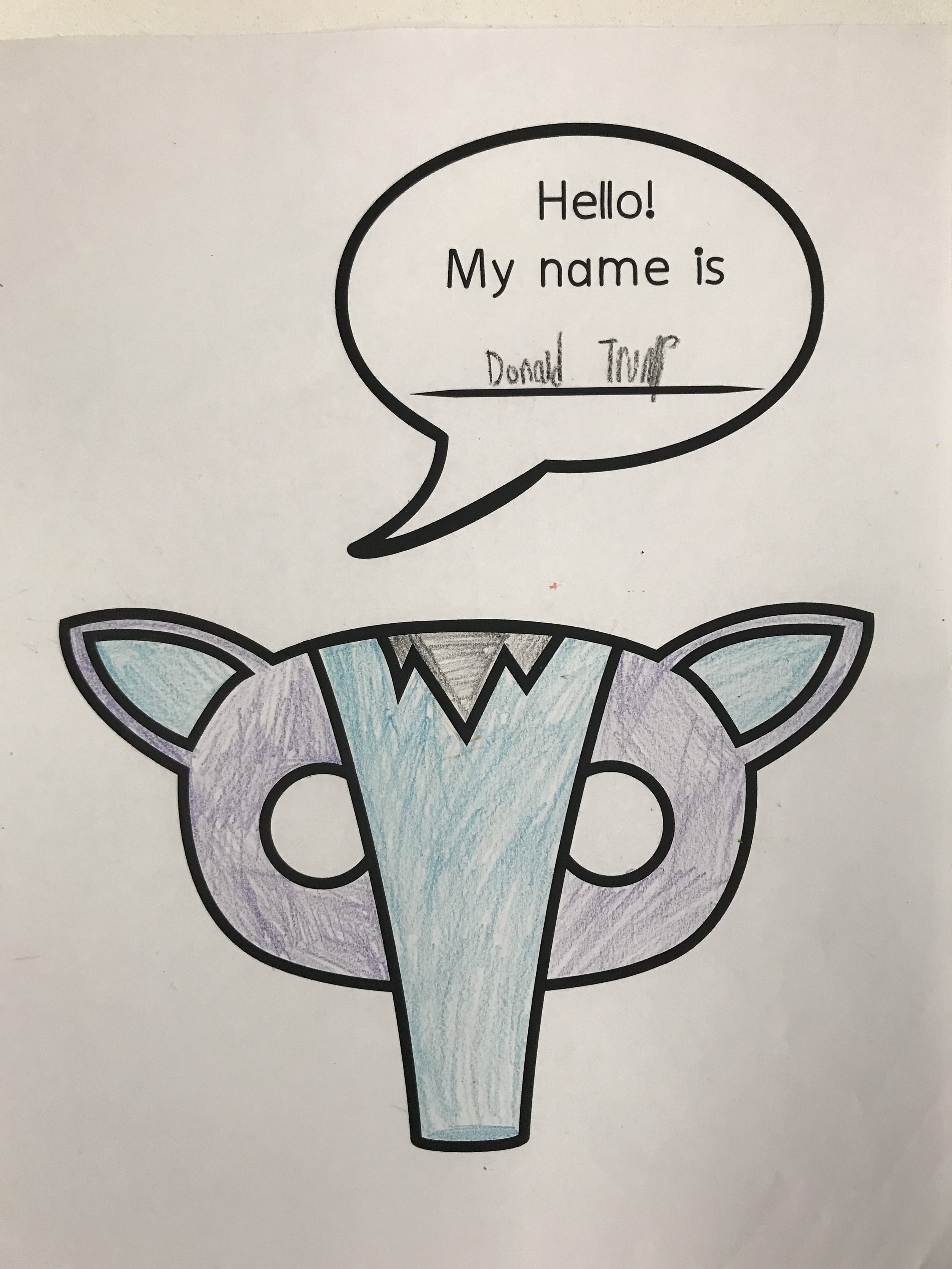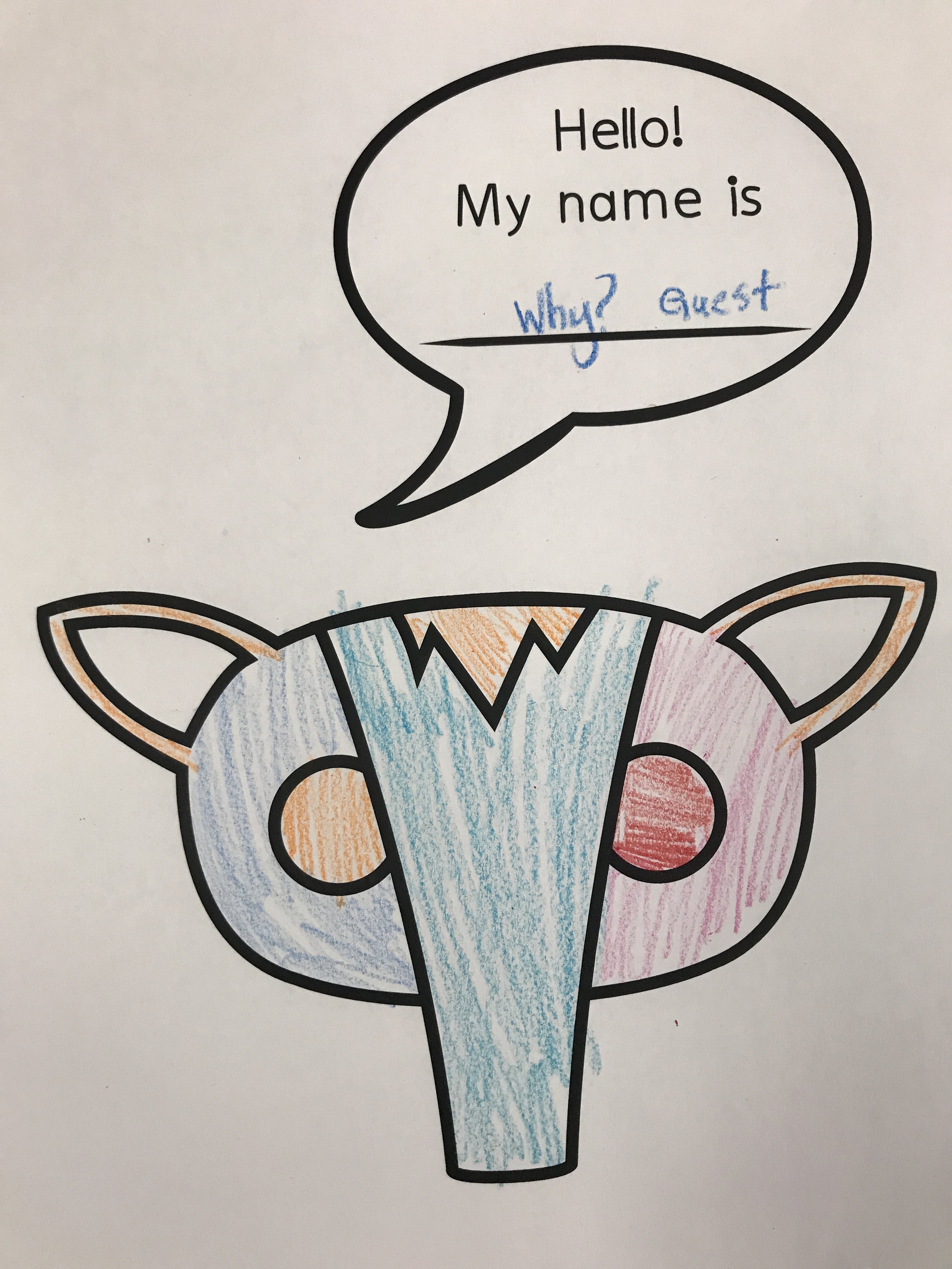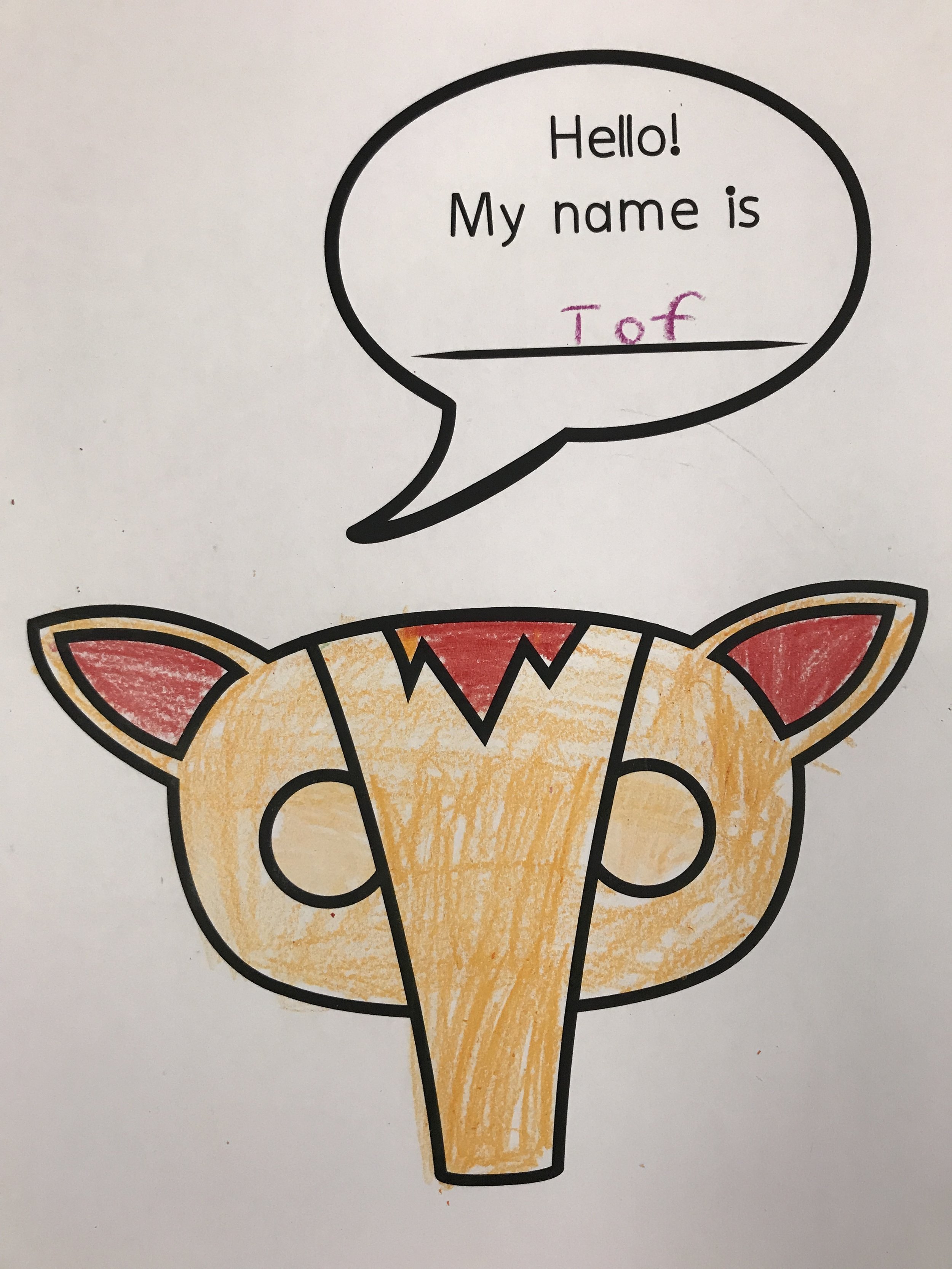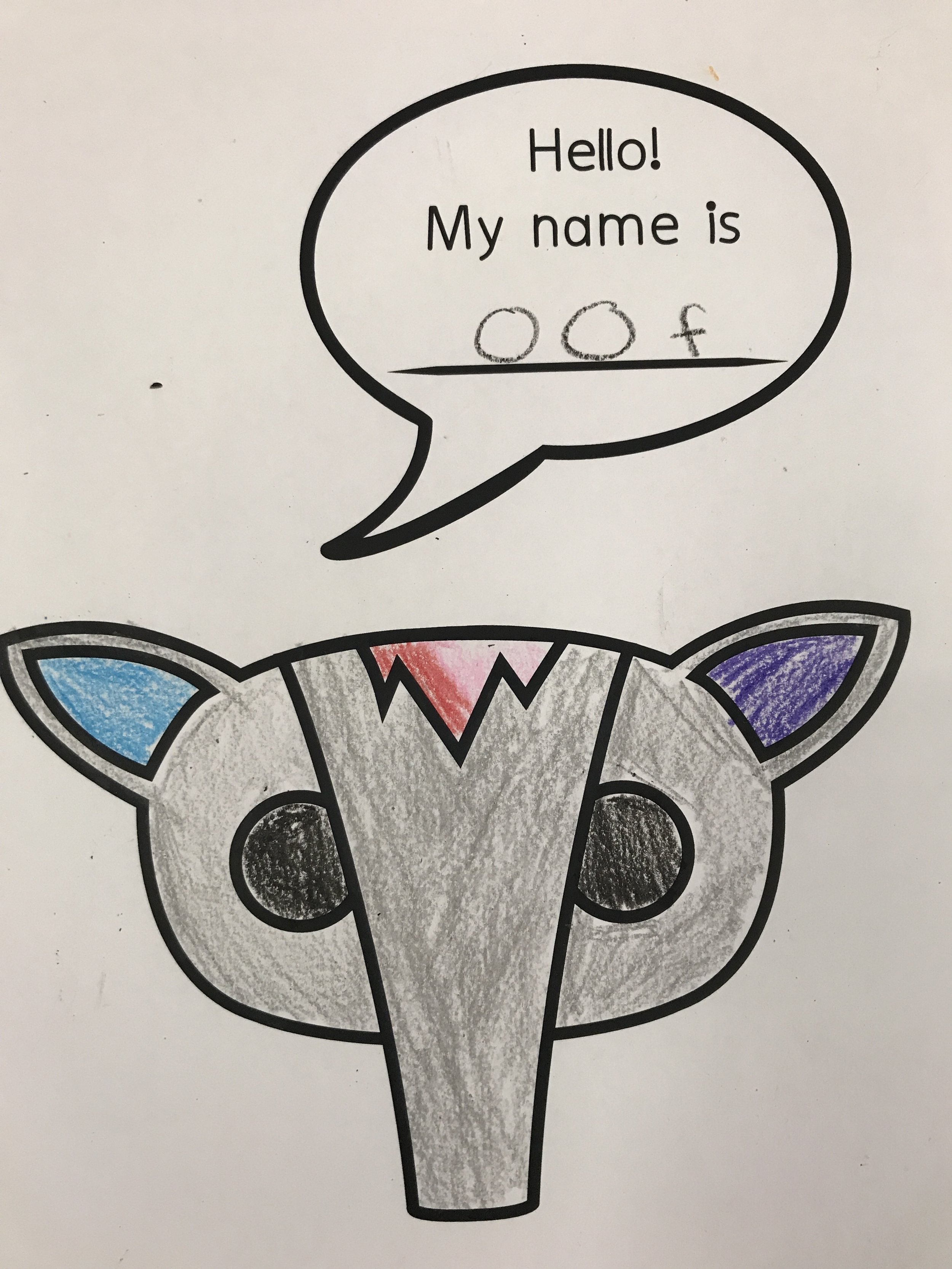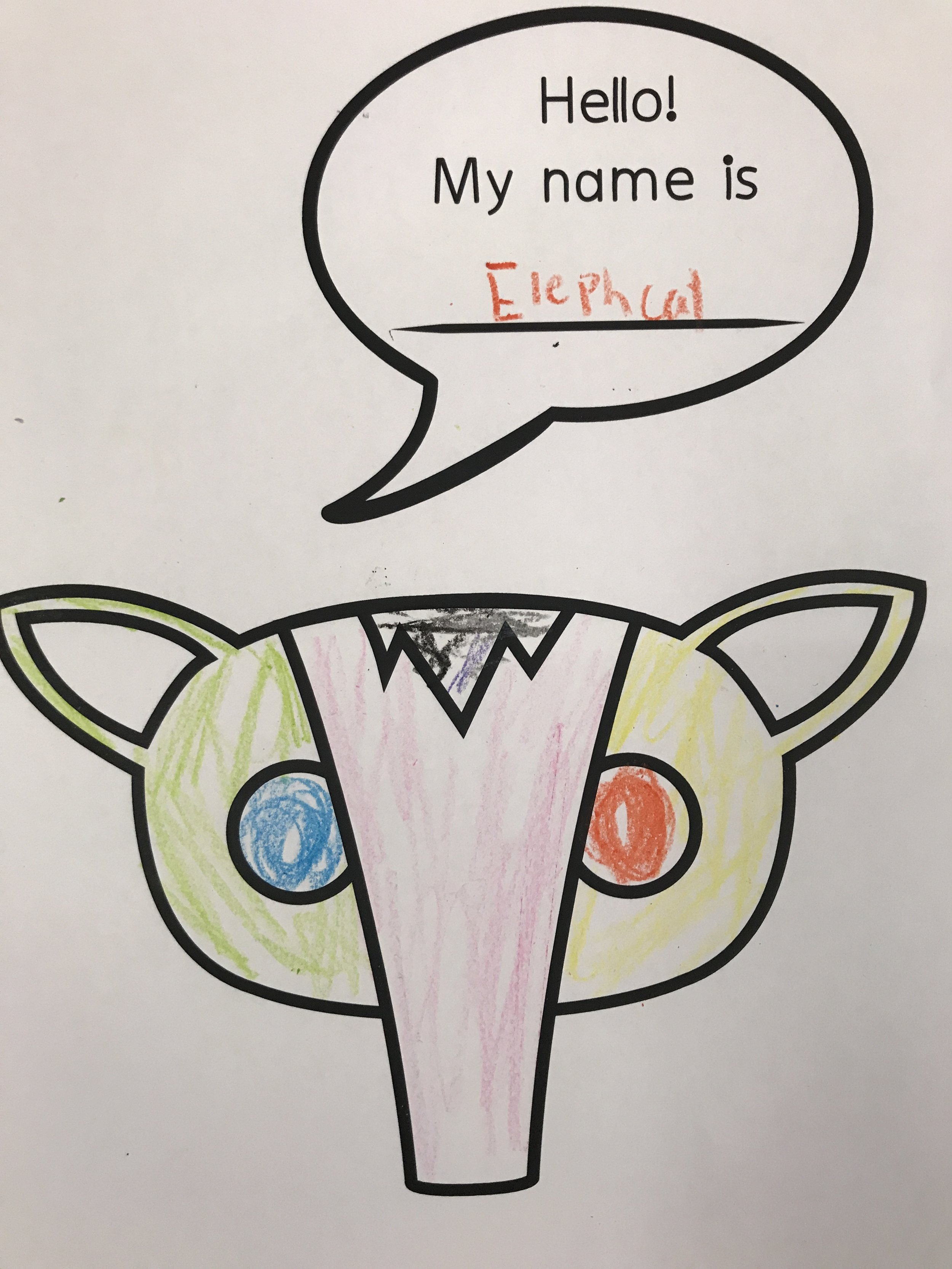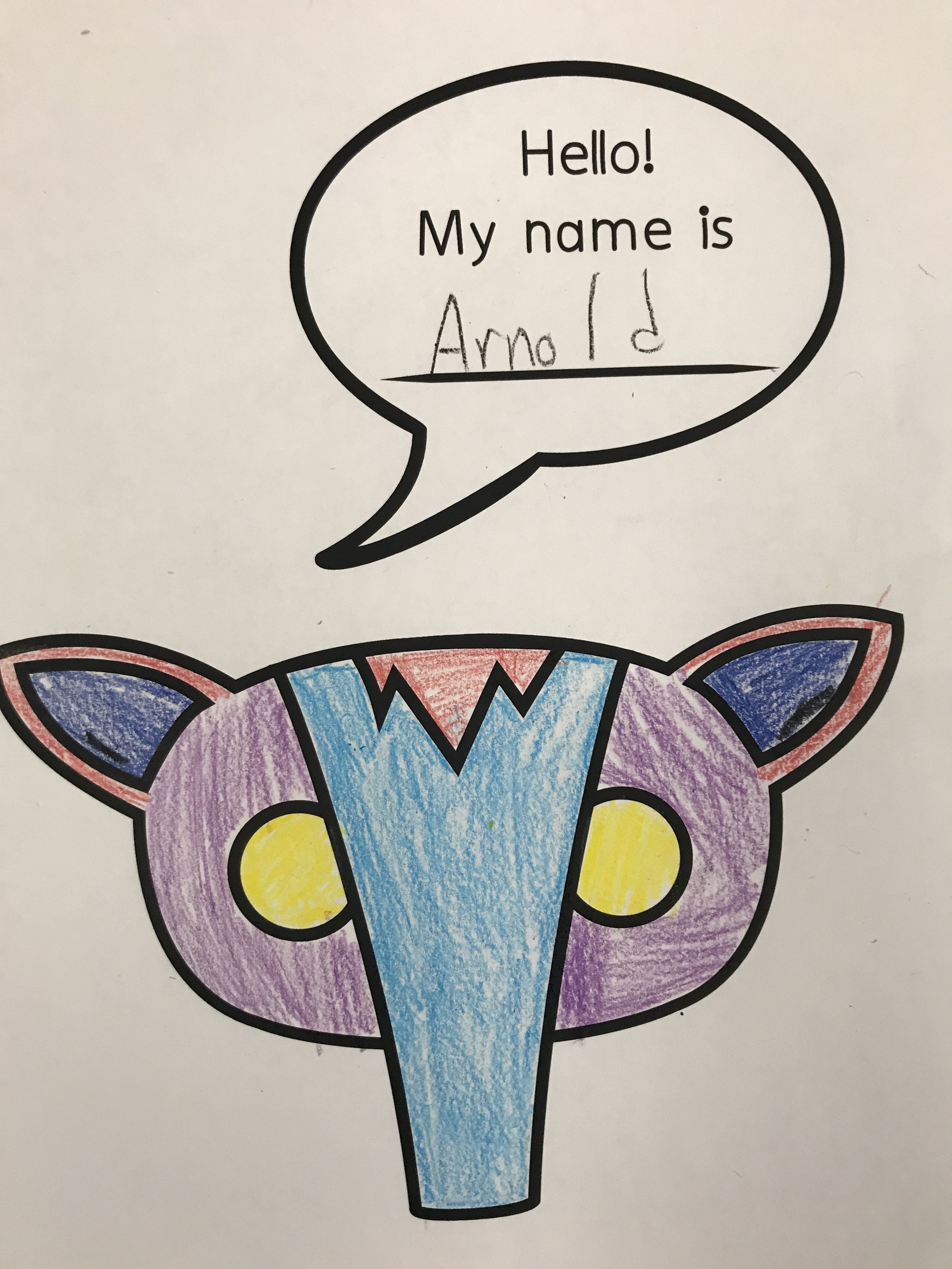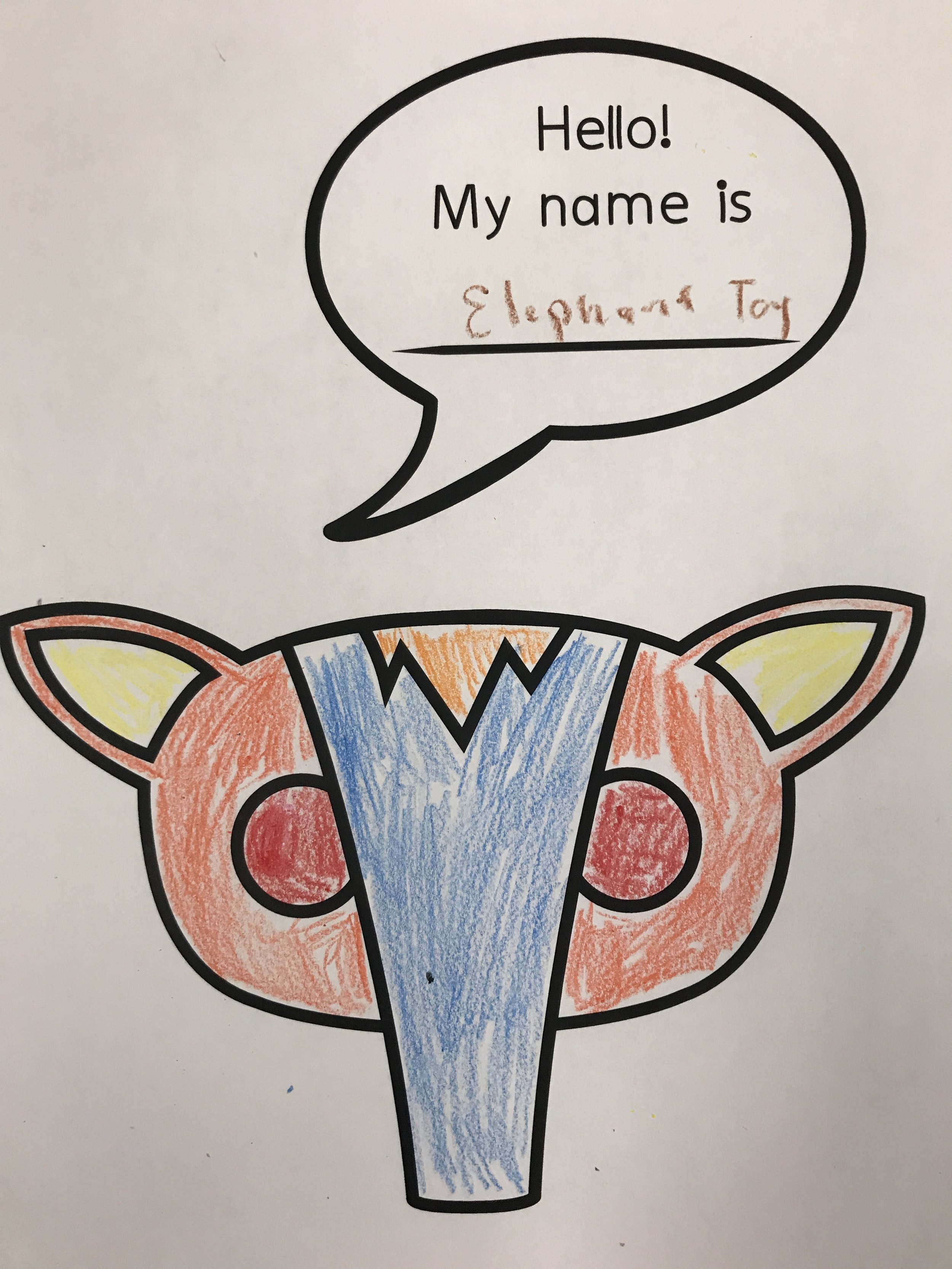This week we went to a school and tested our toy with two groups of 3rd and 4th graders. Each group had 4-5 kids in it and most were boys. We had about 10-15 minutes with each group.
Drawing activity and use of the toy
In order for the team to start the conversation with the children, we decided to create an activity that would engage them in learning about the toy. We created a coloring book style drawing of the toy and used this activity for two main reasons:
1. Collect feedback on the names that children like for toys like ours
2. Motivate them to color the drawing using as many colors as they wanted, in order for them to later use those colors to be scanned by the toy and generate sound with them.
It was important for us that the kids trusted us and we focused on empowering them so that they could play with the toy in a very loose and honest way. The main purpose of the exercise and its respective observation was to be able to introduce the children to the use of the toy in a progressive and more involved way.
Key takeaways from the activity:
Kids engaged very fast with the coloring activity and didn’t need much instructions to do so.
They used the colors of the draw to scan them with the toy however they didn’t immediately understand what was going on (the colors changing the notes being emitted by the toy).
Some children were methodical in figuring out the toy, scanning one colored crayon at the time, while others were more exploratory and scanned book pages with many colors at once
The kids were more motivated to scan other colorful objects such as the books and the balloons that were also settled in the table where we performed the test.
A kid with learning disabilities was the one who engaged in a better way with the toy, as researchers we have the theory that this might have been because our target audience was younger kids and the kid with learning disabilities might have had a similar interaction than our originally intended target audience.
In terms of the design, we observed that the mapping of colors to ones which have a strong symbolic association (red, green, yellow) creates the connotations of ‘right, wrong’ in the minds of children. We also observed that the sounds emitted need more variety for both keeping children’s interest and having a clearer correlation with the colors they are scanning.
Direct questions to children
During the playtime with the toy, we asked each group of children the same set of questions in order to understand how they conceived of the toy and interaction. Below is a summary of the questions and their responses.
The children quickly learned the interaction and several wanted to know how it works. We did have to do some prompting to show the children additional ways to explore with it, so one take away was that it may help to design into the toy interaction some prompts for exploration and have more narrative or framing around that.
How would you describe this toy to your best friend?
Music player
Smells stuff
Noisy
Lights up
Colors make the noise
I’ll teach them how to use it
This is a recorder
It makes sound
It’s fun because it can make music with color
Would you want to play with this toy again?
Yes
I usually play with toys to make fun of it
Where would you want to play with this? Inside? Outside?
I want to take him home. I want to sleep with him.
Put it on some piece of paper, color the paper and put the nose on it/ draw on the wall
How does the toy make you feel?
Good
Oof
Confused
Want to see what will happen
Interested
Other Quotes
“It thinks bad of you because it’s eye is read”
“He’s a better singer than you’ll be
“Woah!”
“I want to use it to annoy my mom”
“Can I take him home?”
“Try green!”
“I found something he doesn’t react to!”
Group Reflection
After the playtesting, we came back together as a group and reflected on each toy and talked about AI and smart toys in general. It was enlightening and a bit disheartening to hear about the children’s current play practices, especially the heavy reliance on youtube and ipads. Below are some notes from the discussion:
Notes on our toy
It should have 2 noses
It should look more like an elephant
What is AI?
A computer
Google is controllable by another robot and another robot controlling that robot
More kids will play with tablets and phones
You can play with multiple games
Mostly I watch youtube (slime videos, diys)
More advanced than toys
What are your favorite toys?
Hamster
Chess
Tablet → phone → nintendo
Books
Stuffed animals
Jumping
What is most challenging for you?
Swimming
Listening to teachers
Waking up
Annoying mom
Getting bad grades
Going to school

